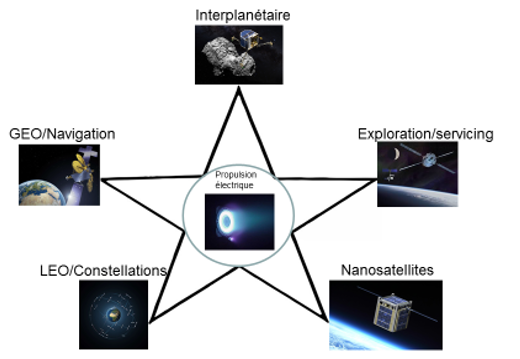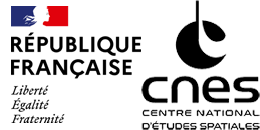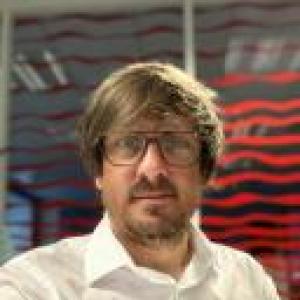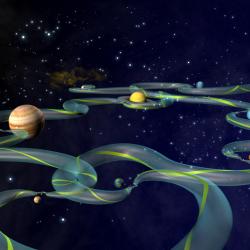 PAPE - Electric Propulsion
PAPE - Electric Propulsion
The Electric Propulsion is at a crossroad of its history. Indeed, it is now widely used on commercial satellites for North-South Station Keeping (NSSK) maneuvers. But the significant mass savings, associated with recent in-flight achievement, allow perspectives which were not possible before. Thus, the electric propulsion technology is not only foreseen for operations of station keeping but also for orbit raising of geostationary/navigation satellites, which opens a considerable market.
Moreover, Nano-satellites are new comers for space applications which can benefit from electric propulsion systems. Besides, guiding and controlling very small satellite trajectories as well as their orbital drift requires compact and robust electric propulsive systems. This is why new innovative and efficient propulsion systems are needed, and new paths have to be explored.
This turning point means a deep thinking about this new game changing brought by electric propulsion:

- in the short term, propulsion subsystems shall be suited to these new applications and shall increase their competitiveness (GEO, telecom),
- in the middle term, the new product line will have to meet the needs of futures missions (LEO, constellations, nanosat),
- in the long term, breakthrough has to be performed for more ambitious missions (space-Tug, far-off explorations, …).
This COMET deals with all the topics related to electric propulsion from the fundamental physics at play to the technology developments.
The Community will support open innovation initiatives and any activities that could foster cross exchanges between experts from space and beyond. The COMET is open to worldwide contributions.
The COMET can provide logistic supply (room for meetings, webconf plateform, etc…) and sponsoring.

Actions that could be undertook are:
- Dissemination of information
- Presentation of R&T activities outcomes
- Presentation and Benchmarking of simulation tools
- RoadMap sharing, ...
- Set up working group to identify major topics of interest and work on it
- Visit experimental facilities
- Seminar, Lectures, training session
Outcomes could be :
- Cooperation with shared R&T activities, co-management of a Ph.D. thesis or of trainee, etc…
- Publications, position paper
- Share data base
- Definition of a benchmark, experiment
- Preparation of a shared Roadmap
- Etc…












